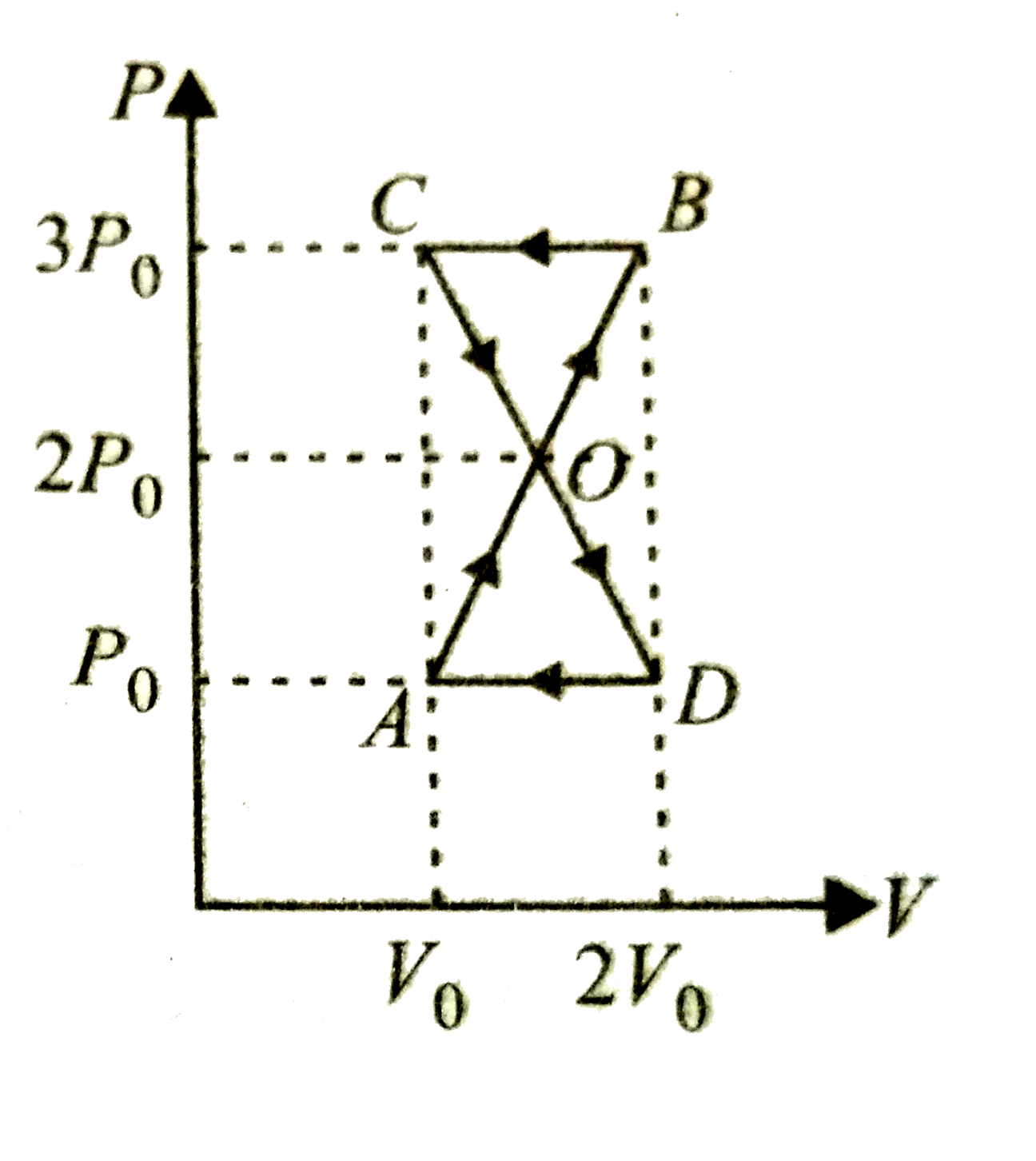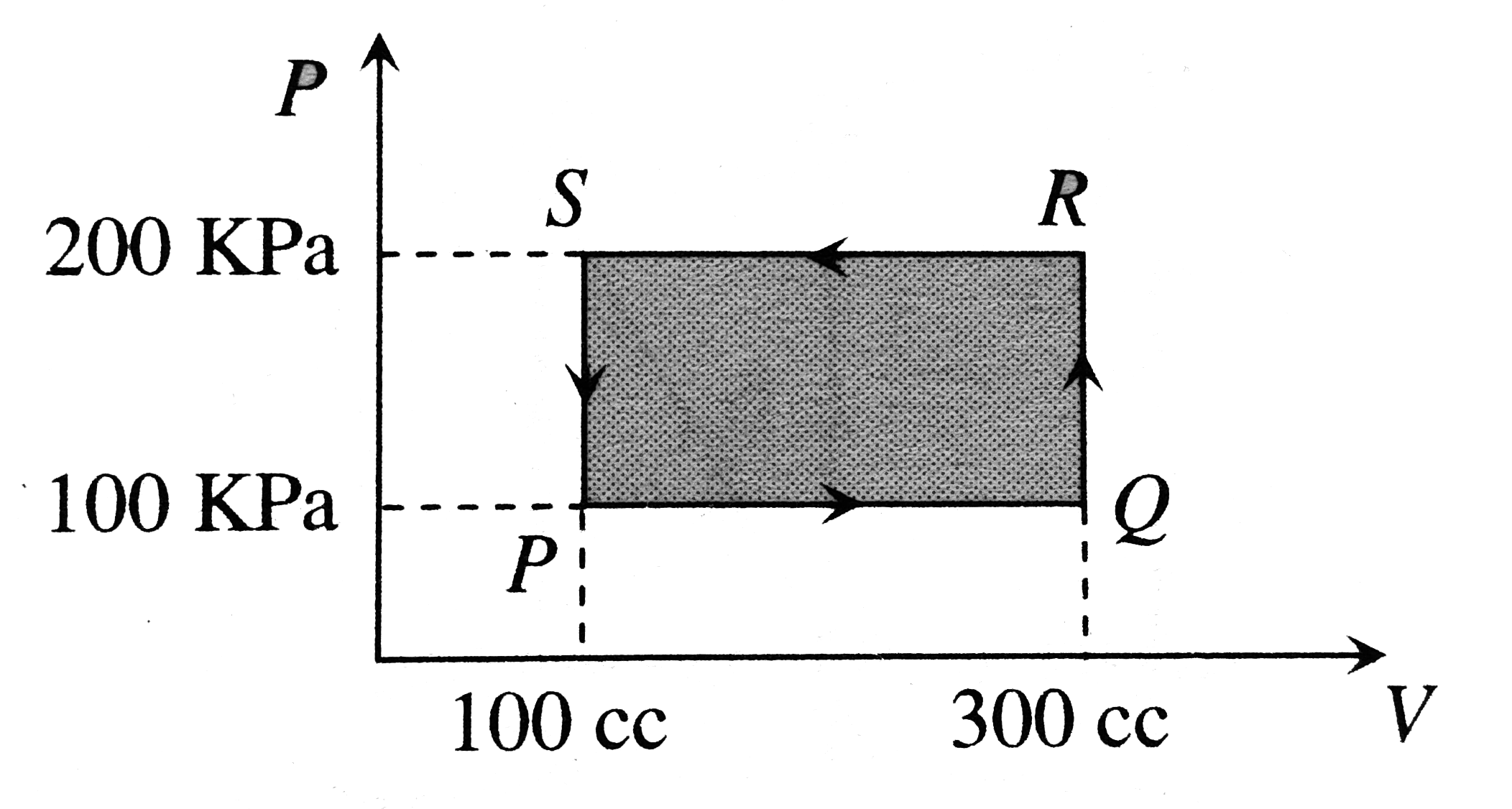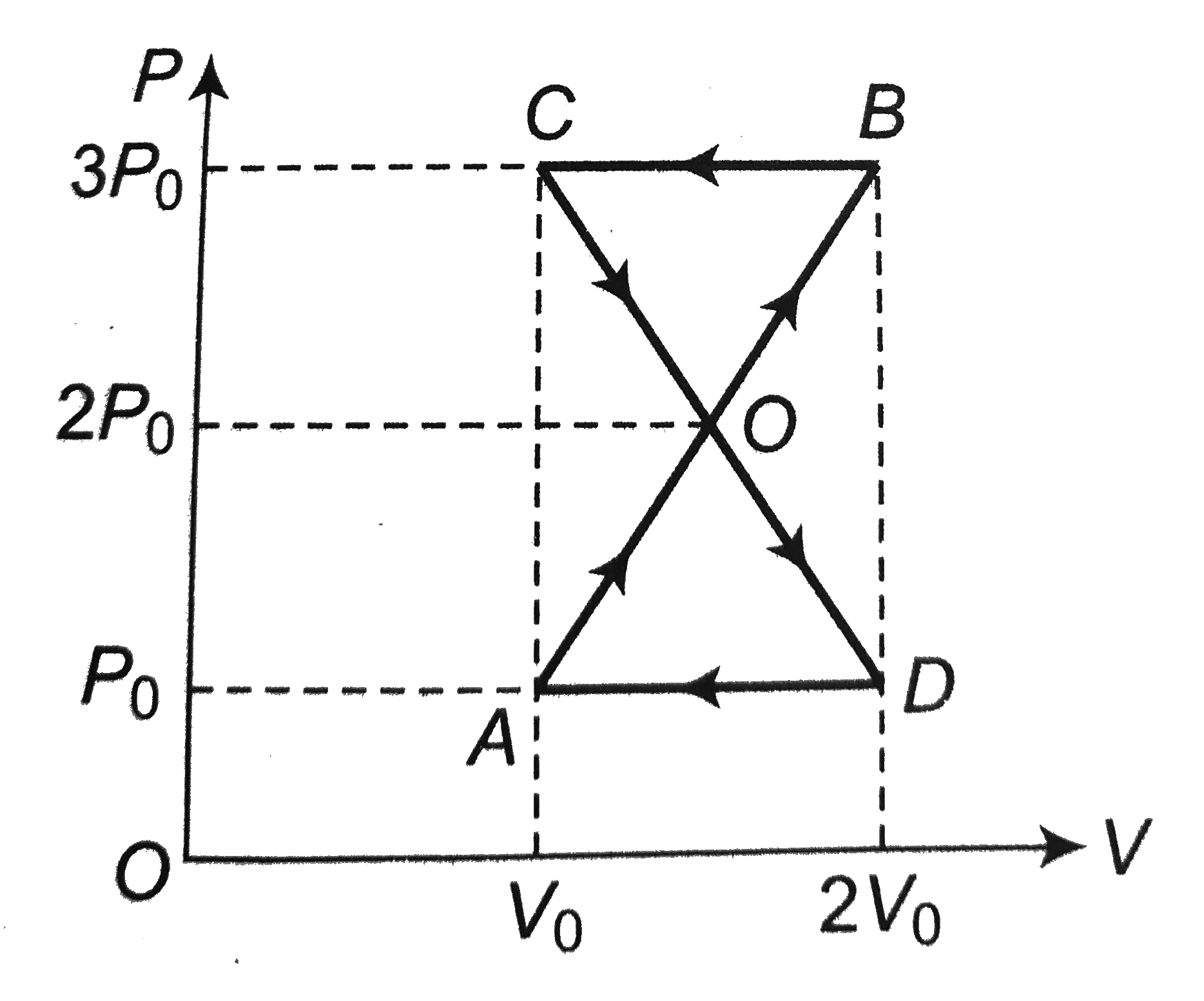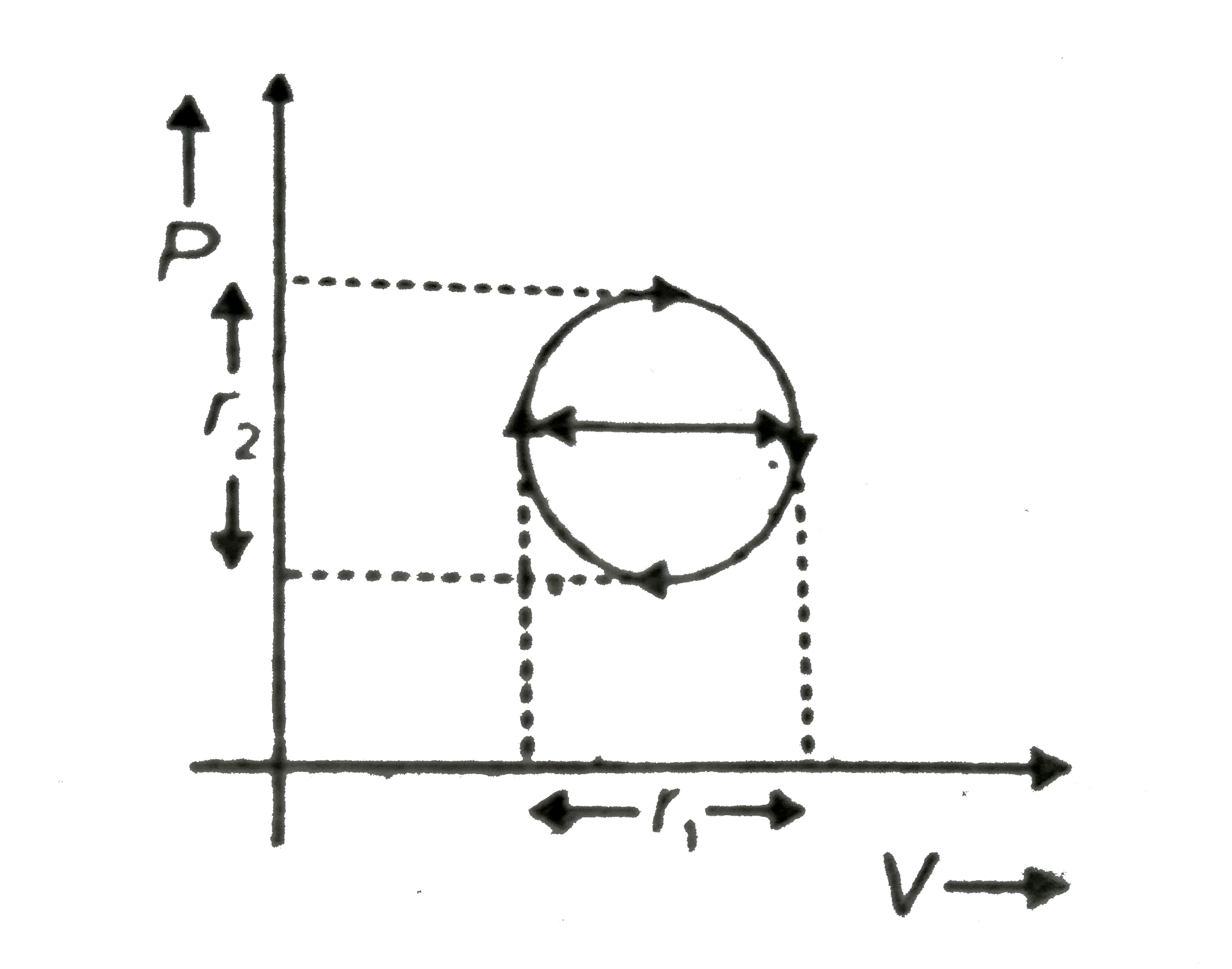In a cyclic process, work done by the system is
Zero
More than the heat given to the system
Equal to heat given to the system
Independent of heat given to the system
The correct Answer is:C
To solve the question regarding the work done by the system in a cyclic process, we can follow these steps:
1. Understanding the Cyclic Process:
- In a cyclic process, the system returns to its initial state after completing a series of processes. This means that the initial and final states (pressure, volume, and temperature) are the same.
2. Analyzing the PV Diagram:
- On a Pressure-Volume (PV) diagram, the cyclic process is represented by a closed loop. The area enclosed by this loop represents the work done by the system during the cycle.
3. Change in Internal Energy:
- The change in internal energy (ΔU) for a cyclic process is zero because the system returns to its original state. Mathematically, ΔU = 0.
4. Applying the First Law of Thermodynamics:
- The first law of thermodynamics states:
ΔU=Q−W
where Q is the heat added to the system, and W is the work done by the system. Since ΔU = 0, we can rearrange this equation:
Q=W
- This means that the heat added to the system is equal to the work done by the system.
5. Determining the Work Done:
- The work done by the gas in a cyclic process is equal to the area enclosed by the loop on the PV diagram. This area can be positive or negative depending on whether the process involves expansion or compression.
6. Conclusion:
- Therefore, the work done by the system in a cyclic process is represented by the area enclosed in the PV diagram, and it is not zero.
Final Answer:
The work done by the system in a cyclic process is equal to the area enclosed by the cycle on the PV diagram.
---
- In a cyclic process, the system returns to its initial state after completing a series of processes. This means that the initial and final states (pressure, volume, and temperature) are the same.
- On a Pressure-Volume (PV) diagram, the cyclic process is represented by a closed loop. The area enclosed by this loop represents the work done by the system during the cycle.
- The change in internal energy (ΔU) for a cyclic process is zero because the system returns to its original state. Mathematically, ΔU = 0.
- The first law of thermodynamics states:
ΔU=Q−W
where Q is the heat added to the system, and W is the work done by the system. Since ΔU = 0, we can rearrange this equation:
Q=W
- This means that the heat added to the system is equal to the work done by the system.
- The work done by the gas in a cyclic process is equal to the area enclosed by the loop on the PV diagram. This area can be positive or negative depending on whether the process involves expansion or compression.
- Therefore, the work done by the system in a cyclic process is represented by the area enclosed in the PV diagram, and it is not zero.
The work done by the system in a cyclic process is equal to the area enclosed by the cycle on the PV diagram.
Similar Questions
Knowledge Check
A thermodynamical system undergoes cyclic process ABCDA as shown in figure work done by the system is
 AZeroB2P0V0CP0V0D32P0V0
AZeroB2P0V0CP0V0D32P0V0
Consider the process on a system as shown in the figure. During the process, the work done by the system

View Solutionif work is done by the system then W is
View SolutionA thermodynamic system is taken through the cyclic PQRSP process. The net work done by the system is

View SolutionA thermodynamic system is taken through the cyclic PQRSP process. The net work done by the system is

View SolutionThe final volume of a system is equal to the initial volume in a certain process. Is the work done by the system necessarily zero? Is it necessarily nonzero?
View SolutionA thermodynamic system undergoes cyclic process ABCDA as shown in figure. The work done by the system is

View SolutionIn a process, 701J of heat is absorbed by a system and 394J of work is done by the system. What is the change in internal energy for the process?
View Solution

